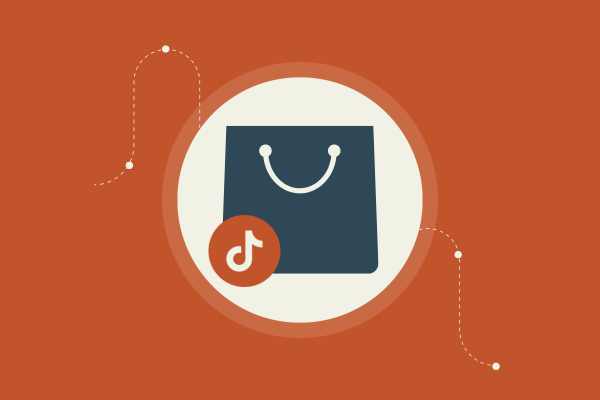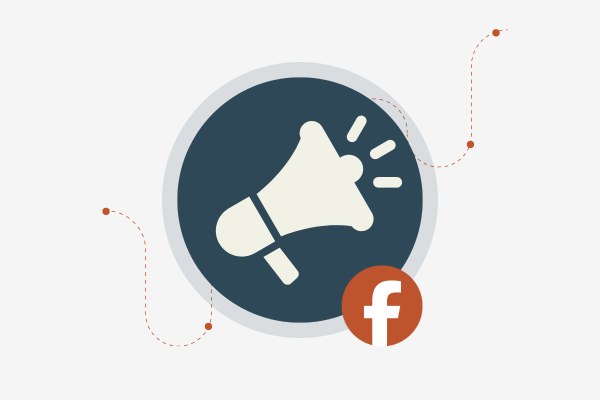How Variable Costs Can Hold Back the Growth of Your eCommerce Business: Stop Bleeding Money
Beneath the surface of your growing eCommerce business, variable costs can act like an anchor, slowing down progress. These expenses change based on your level of production or sales, directly gushing into your bottom line as you sell more. Knowing how they work can help you steer clear of unexpected setbacks and keep your profits healthy.
Think of every transaction as a stepping stone. Yet, if your variable costs are left unchecked, they turn into stumbling blocks. This is where many online sellers trip up, unaware that each sale could increase these costs. It's easy to get caught up in the sales rush and forget about the impact on profit margins.
To truly grow, you need to strategize. Understand which costs fluctuate and find ways to manage them. This means not just selling more but selling smart. Embrace the challenge, control those costs, and boost your eCommerce ventures into powerful growth mode.
Key Takeaways
Variable costs increase with production and can hurt profits.
Managing these costs is crucial for successful growth.
Smart strategies help transform costs into opportunities.
Understanding Variable Costs in Ecommerce
When you're running an ecommerce business, variable costs take up a chunk of your cash flow. The good news is, knowing how to break them down can help you grab a bigger profit margin.
Definition of Variable Cost
Variable costs in ecommerce are expenses that change based on the quantity sold or produced. They're not static. So, as sales go up, so do these costs. Shipping, packaging, and transaction fees? They all fit under this umbrella. These costs directly affect your bottom line. Learn to manage them because low variable costs can mean bigger profits. Variable costs differ from fixed costs, which stay the same no matter how much you sell.
Examples of Variable Costs
In ecommerce, variable costs show up in different areas. Shipping costs and packaging top the list. When you sell more, shipping expenses swell. Transaction fees also count here—think credit card fees and payment processor commissions. Each sale adds another layer of cost. Don’t ignore these fees. Keep an eye on your service fees and platform charges too. Every sale might look good on paper, but the fine print tells the real story.
Variable Cost Formula
Want to calculate your variable costs? Here’s a simple formula:
Total Variable Cost = Variable Cost Per Unit × Number of Units Sold
Plug in your numbers to get a clear snapshot of your expenses. For instance, packaging might cost $2 per item. If you sold 500 items, your packaging cost is $1,000. Break it down. This formula helps you see where your money is going. Adjust your pricing and find ways to cut costs. These numbers hold the key to maximizing your profit margin.
Impact of Variable Costs on Profitability
Variable costs play a huge role in shaping your eCommerce business's profitability. They affect everything from calculating your profits to understanding your profit margins and knowing when you hit your break-even point. Let's break this down.
Calculating Gross and Net Profit
First off, gross profit is where you start. It's what you get when you subtract total variable costs from your revenue. So, every time you sell those t-shirts or gadgets, you're pocketing that sweet gross cha-ching.
But hang on. Net income is where you truly know how you're doing. This is gross profit minus all the other costs—think fixed costs like rent, utilities, and more. Tracking these numbers helps you know exactly where your business stands.
Profit Margin and Variable Costs
Your profit margin is like your business’s speedometer. It tells you how fast you’re gaining, or losing, money. To calculate this, you divide your net income by your revenue.
High variable costs can turn that speedometer down. Say those fancy widgets you sell suddenly cost more to make. Your profit margin shrinks. Keeping your variable costs in check helps make sure your business isn’t spinning its wheels.
Break-Even Analysis
Hitting your break-even point is like crossing the finish line. It’s where you’ve sold enough to cover both your variable and fixed costs. Beyond that point, you’re in profit land.
To find this magical spot, divide your fixed costs by your gross margin percentage. If your variable costs rise, it pushes that break-even point further away. This means you’ve got to sell more to hit profit. Keep an eye on those costs, and you’ll know exactly when you’re playing in the green.
Fixed Versus Variable Costs
Grasping fixed and variable costs is vital for running your eCommerce business successfully. Knowing what these costs are and how they affect your bottom line helps drive growth and efficiency.
Understanding Fixed Costs
Fixed costs stay the same regardless of how much you sell. They’re like that loyal friend who’s always there, rain or shine. These include expenses like rent, salaries for full-time employees, and insurance.
Think of them as the constant heartbeats of your business. They don’t change with the tide of sales but need to be budgeted carefully to avoid any hiccups. Fixed costs form your baseline, ensuring you have the essentials to keep the doors open and the lights on.
Overhead is another name for these trusty expenses. It includes anything from your spacious office space to that must-have subscription you keep for maintaining your systems. While they seem boring, these costs ensure you’re not just floating around without a plan.
Combining Fixed and Variable Costs for Maximum Efficiency
When you combine fixed costs with variable ones, you’re in control. Variable costs change with your production and sales volume, like the raw materials or electricity used in manufacturing. If done right, balancing both can make your business run like a well-oiled machine.
How do you do it? First, identify each cost and list them. Then, look for areas to cut without losing quality. Find efficiencies where possible, like changing suppliers or streamlining operations.
Even semi-variable costs play a role, blending fixed and variable elements. More sales mean more spending here, so keep a close eye. It’s this mix that gives you leverage over your expenses, ensuring you don’t just keep the lights on but blaze a path to growth.
Strategizing for Growth with Variable Costs
To supercharge your eCommerce business, you need to handle variable costs like a pro. Smart strategies can lower these expenses and improve your profit margins.
Leveraging Economies of Scale
Here's the trick: bigger can be better. By increasing production, you can lower your average variable cost per unit. Let's say you produce more widgets. The cost of raw materials per widget might drop. This magic happens because suppliers often offer discounts for bulk purchases.
Automation tools can also contribute to this. For example, automated inventory systems help manage stock levels efficiently, reducing unnecessary spending. You're tapping into economies of scale, ideally with a vision of higher production and lower cost per item. Embrace growth, and watch the savings pile up. This is a game-changer.
Optimization of Variable Costs
Optimization is where the rubber meets the road. Focusing on what's eating into your variable costs can pay off big time. Look closely at your expenses, like shipping fees or packaging costs, and find ways to cut them down. Maybe cheaper materials won't compromise quality. Sounds simple, right?
Invest in technology that monitors these expenses closely. For instance, an ERP system manages orders and tracks costs, highlighting areas to reduce waste. It's not about one grand move, but a series of small adjustments. Each step makes your business leaner, leaving more room for profit.
Outsourcing to Reduce Costs
Outsource and win. By letting specialists handle tasks, you cut down on something you don't need to do yourself. Think about hiring packaging companies or customer service agencies. They're experts and often get the job done at a lower cost than an in-house team.
With outsourcing, you also save on expenses like salaries and equipment. Keep in mind that while selecting a partner, look for quality and dependability. It's like you hand off the heavy lifting and in return, you get efficiency and reduced costs. Use this strategy right, and you'll see your business thrive.
Practical Tips for Managing Variable Costs
Managing variable costs can make or break your eCommerce business. Efficient inventory practices, smart cost-cutting, and tech investments are the keys.
Effective Inventory Management
Inventory's a beast. Tame it to save money.
First, keep just enough stock. Not too much, not too little. This is called just-in-time inventory. It reduces waste and storage fees.
Use tech to track your products. Good software can alert you when you're low. It helps you avoid overstocking. For some tips on keeping costs down, have a look at these ideas to reduce variable costs.
Look for deals with suppliers. Sometimes, buying in bulk can save some cash. Find the sweet spot for your business.
Cutting Costs without Cutting Corners
You need to cut costs, but quality's king. No point selling junk, right?
First, think about labor. Keep labor costs down by streamlining processes. Use part-timers when you can. They save money without hurting quality.
Energy costs are sneaky. Use energy-efficient equipment. It saves money long-term. Production costs can sink you if you're not careful.
Customer satisfaction is vital. Efficient production helps keep them happy. Stay away from shortcuts that hurt quality.
Investing in Technology
Love it or hate it, tech is your friend. It can save you loads.
Automate where it makes sense. It cuts labor costs. Use inventory management tools. They reduce mistakes, saving you big time.
Outdated gear is a drag. Invest in the right tech, and you'll see efficiency rise. Variable costs can be managed better with the right tools.
Stay competitive. If your tech's top-notch, you stay ahead. Keep your eyes open for the next best thing.
Upgrading isn't cheap, but efficient tech can pay you back. Faster, smoother operations are worth it.
Marketing for Maximized Margins
Boost your eCommerce business by focusing on two key areas: reducing your advertising and customer acquisition cost while maximizing customer lifetime value. These strategies are all about making your marketing dollars stretch further and keeping your profits growing.
Advertising and Customer Acquisition Cost
Advertising can be a huge expense, but it’s crucial for bringing in new customers. The trick is to keep your customer acquisition cost (CAC) in check. You should be tracking how much you're spending to get a single customer. Digital marketing tools can help you analyze this data.
Use targeted ads to reach the right audience. Platforms like Google Ads or Facebook allow you to target specific demographics. This precision means you waste less money on uninterested viewers. Also, consider using simple and effective strategies like offering discounts for first purchases. This draws people in without breaking the bank. Focus on optimizing your ad spend by crafting compelling ads that capture attention quickly.
Maximizing Customer Lifetime Value
Once you acquire a customer, you want to keep them coming back. This is where maximizing customer lifetime value (CLV) comes into play. Knowing how much revenue a customer brings over time helps you understand how much you should invest in keeping them.
Upselling and cross-selling are vital tactics. Suggest related products at checkout or through follow-up emails. Consistent engagement through digital marketing, like email campaigns, ensures your customer stays connected to your brand. Consider loyalty programs to increase retention. They encourage repeat purchases and can build brand loyalty. Keeping customers is often cheaper than acquiring new ones, so focus on building lasting relationships.
Accounting for Success
Getting a grip on your accounting can fuel the growth of your eCommerce business. It’s about staying on top of your numbers and using that data to outsmart your costs. Let's dive into how bookkeeping and data analytics fit into this winning formula.
The Role of Bookkeeping in Managing Costs
Bookkeeping is more than just number-crunching. It’s your secret weapon in knowing where every dollar goes. By keeping meticulous records, you get to see the full picture: income, expenses, utility costs, discounts, and more.
Use a digital system. Automate as much as you can. Manual tracking? Toss it out. Create habits that help you regularly review your financials. Weekly or monthly—your choice. Regular reviews ensure you spot overspending. Maybe your utility costs are creeping up. It's easier to cut costs when you know right where to look.
When you control your books, you control your business. Decisions become data-driven, not guesswork. Bookkeeping shows you what’s eating into profits and gives the power to rectify it fast.
Analyzing Costs Through Data and Analytics
Data is king, and analytics is its crown. By analyzing your costs, you turn raw numbers into actionable insights. Imagine knowing exactly how discounts affect your margins. Use tools that combine analytics with bookkeeping software.
Look for trends. Is there a period where costs spike or dip? Identify these patterns. For example, using analytics, you might see shipping costs rise during holidays. Plan to negotiate better rates. Find potential savings in unexpected places!
Don't just gather data—act on it. Makes decisions swift and sharp. With analytics, what seemed like a mere guess now becomes a strategy. Leverage that intel to optimize every facet of your business and stay ahead of the curve.
Building a Scale-Ready Business Model
Building a scalable business model is crucial for eCommerce growth. You'll need to carefully balance variable costs and optimize your contribution margin to stay ahead. Let's dive into the key areas.
The Importance of a Solid Business Model
You can't scale without a solid business model. It’s the blueprint for your success and profitability. Your model must be adaptable to changes without incurring high costs. When you get it right, scaling up becomes easier.
Focus on:
Revenue Streams: Identify where your money comes from.
Key Partnerships: Leverage alliances to reduce costs.
Cost Structure: Keep a close watch on your fixed and variable costs.
A strong foundation helps you scale without having to overhaul everything as you grow.
Contribution Margin and Growth
Your contribution margin—sales minus variable costs—is your pathway to growth. It tells you how much is left to cover fixed costs and generate profits. The higher, the better!
Here’s why it matters:
Flexibility: More margin means more freedom to invest in growth.
Risk Management: It cushions you from rising variable costs.
Profitability: Maximizes what’s left after subtracting all costs.
Use a profit calculator to track and maintain a healthy margin. Know where each dollar is going, and make sure it’s working for you.
Competitive Advantage through Cost Management
Your edge is in managing costs better than anyone else. Variable costs can kill your bottom line if you’re not vigilant.
Some strategies include:
Supplier Negotiation: Hammer out better deals on raw materials.
Efficient Operations: Streamline processes to cut waste.
Tech Integration: Use tech to automate and save on labor costs.
By minimizing variable costs, you can boost your competitive advantage. You become the lean, mean machine that outperforms the competition.
Success Stories: Variable Costs Done Right
Ever wonder how some e-commerce giants keep winning? Let's talk about how some companies nail their variable costs.
Amazon is a prime example. They streamline their shipping processes like a well-oiled machine. By reducing costs here, they keep prices competitive and boost customer satisfaction. Their brilliant logistics network helps manage those pesky costs per shipment.
For smaller sellers, it’s all about smart SKU (Stock Keeping Unit) management. Know your inventory inside out. This helps avoid dead stock and unexpected costs. Focus on high-demand items to keep the cash flowing and expenses down.
In the world of e-commerce, controlling variable costs means more cash in your pocket. Some top sellers use efficient packaging methods that keep shipping costs low. This strategy adds up to savings over time.
Consider using a table to track your variable costs. Name your expenses, and next to it, jot down what you spend. This gives a clear snapshot of where your money goes.
Expense Type Amount Spent Shipping Costs $ Packaging Supplies $ Transaction Fees $
Got that? Now keep an eye on those costs. Small changes can make a massive difference.







